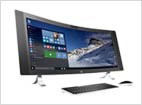
CES Announces the Most Innovative Tech Products for 2016

At most times, it is hard for telecommunications and IT to get a bead on which category is up and which is down. In the case of tablets, however, the reality is pretty clear: Tablets are headed toward the rocks, and the only thing that may save them is the enterprise. And, if it does so, it will emerge as a different category.
Two research reports make it clear that the category won’t survive as it is currently constituted.
The first report is from IDC. The firm found that vendors will end up shipping 211.3 million units during the year, which is 8.1 percent less than 2014, when 229.6 million units shipped.
If there is a silver lining in that rather dismal drop, it is that the market appears set to shift to 2-in-1 devices that feature detachable keyboards. Indeed, this enterprise-friendly subcategory, according to IDC, will grow by more than 75 percent next year and nearly double in size. The charge will be led by innovation caused by competition and low price points.
The second piece of research is from TrendForce. The firm found that weak demand forced it to lower its forecast for 2015 to 163.4 million units, a decline of 14.9 percent compared to last year. TrendForce analyst Anita Wang doesn’t see the light at the end of the tunnel that IDC does:
Tablet shipments will remain weak next year as large smartphones continue to affect tablet sales. ‘Business products such as Apple’s iPad Pro have high unit prices, so they will not be able to offset the decline in small tablet shipments even if they do become a market success,’ Wang noted. ‘Our estimation indicates that a total of 153.4 million tablets will be shipped in 2016, down 6.1% year on year.’
The idea that the market is transitioning is buttressed by news this week that HP is moving upscale. The company, according to Computerworld, is exiting the low-end tablet market. Its focus will be on the detachables, hybrids and business tablets, the story says.

Tablets were a victim of circumstance and a certain amount of hubris. The initial popularity of Apple’s iPad almost certainly led planners to think that the category had more appeal to consumers than it proved to have. Refresh cycles were thought likely to be more like smartphones than PCs or laptops, which proved inaccurate. The lack of exciting features led people to hang onto their tablets longer. As all this was happening (or, in the case of consumer upgrades, not happening), smartphones were getting bigger (and called phablets), which sliced off even more of the consumer rationale for buying the device.
Nandagopal Rajan at The Financial Express sees life at the higher end, but not along the lines of what originally was thought possible:
While it is hoped that enterprise could be the big driver for tablets—with a top player like Apple launching the iPad Pro for the productivity market—things could change. Overall, it will not be a volume play, even though Apple has an opportunity to be a significant player in the enterprise space. Samsung, too, has enterprise-grade devices that could compete for attention of CTOs.
He seems skeptical, however, that the lower end of the category will thrive. He’s probably right, though prices will be low enough to give it a shot at emerging as a vibrant niche.
Carl Weinschenk covers telecom for IT Business Edge. He writes about wireless technology, disaster recovery/business continuity, cellular services, the Internet of Things, machine-to-machine communications and other emerging technologies and platforms. He also covers net neutrality and related regulatory issues. Weinschenk has written about the phone companies, cable operators and related companies for decades and is senior editor of Broadband Technology Report. He can be reached at cweinsch@optonline.net and via twitter at @DailyMusicBrk.












